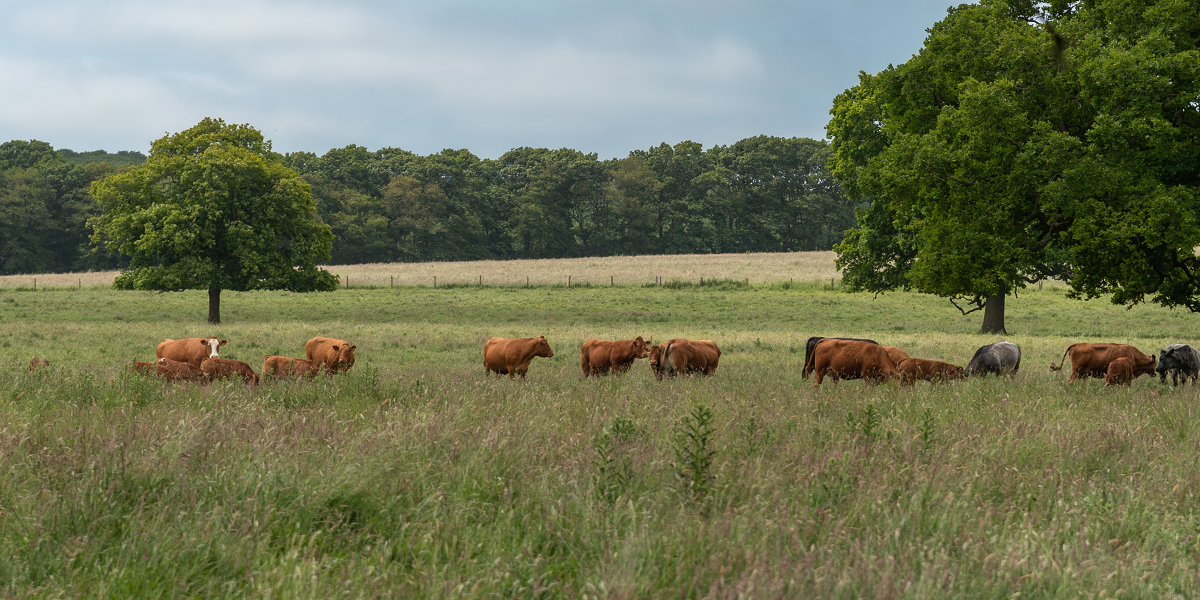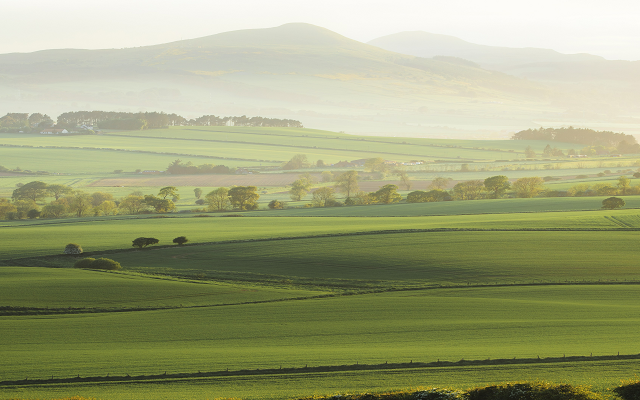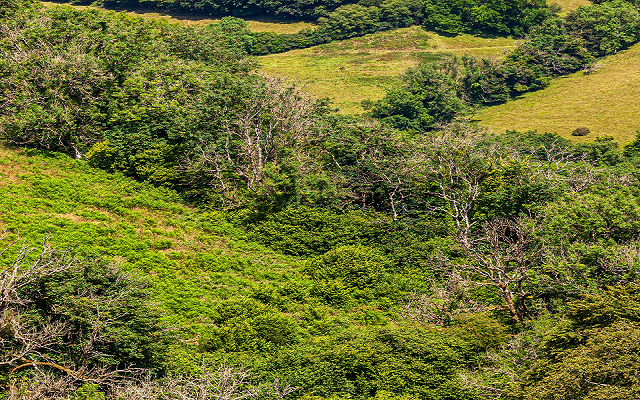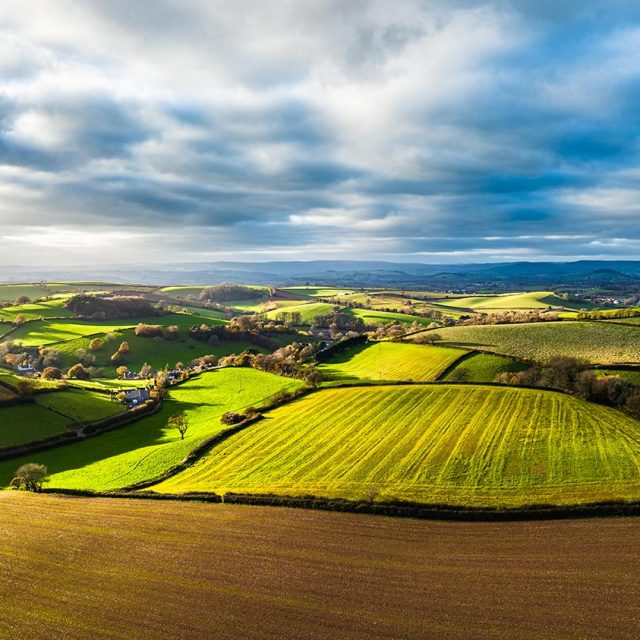Exploring the potential benefits of agroforestry
The early autumn Farm of the Future Agroforestry event, hosted by Stephen Briggs, at his farm near Peterborough, and Innovation for Agriculture, gave a useful insight into why farmers might choose to give agroforestry a try, as well as a glimpse of the challenges and lessons learned along the way.
There is growing discussion around agroforestry as an agricultural system and in this context, we’ve put together a summary of the key points raised during the event.
What is agroforestry?
The Food and Agriculture Organization defines agroforestry as a natural resource management system that, through the integration of trees on farms and in the agricultural landscape, diversifies and sustains production for increased social, economic and environmental benefits for land users. In short, its about planting trees on productive agricultural land which proponents say gives farmers healthier soils and higher yields, whilst creating new habitats for wildlife and a new income stream.
There are a wide range of agroforestry systems deployed around the world each designed to achieve specific objectives but, in essence, there are two main types of agroforestry:
- Silvo-pastoral agroforestry, where trees are grown on grassland with the opportunity to graze livestock beneath them.
- Silvo-arable agroforestry, where crops are grown beneath trees. Trees are usually planted in rows to enable agricultural machinery to travel efficiently between the rows without damaging the trees.
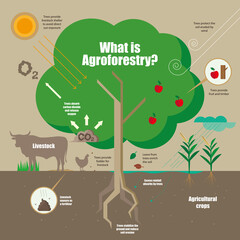
What are the benefits of an agroforestry system?
In silvo-pastoral systems, producers have observed improved livestock health. The shelter provided by the trees can help reduce the risk of heat stress and protect them from the rain and wind. Disease and insect (ticks and flies) pressures can be reduced due to the increased plant diversity and trees can also be an additional food source. For example, cattle enjoy eating ash, rowan and willow trees, which can have nutritional benefits for them. All these benefits could help the animal to maintain condition and some producers have seen improved growth rates.
In silvo-arable systems, the trees can reduce nitrogen leaching, increase biodiversity – leading to increased biological control of pests – reduce wind soil erosion and improve soil health, which can result in higher yields. Surprisingly, the crop area closest to the tree can sometimes give the best yield, which is understood to be down to the symbiotic relationship, and not the competition, of the crop roots with the trees. Moreover, including a grass rotation in a silvo-arable system will mean livestock will have shelter from the trees. This shelter can provide a real welfare benefit to free-ranging poultry, in particular.
Last but not least, integrating trees in the agricultural landscape can also mean that a farmer will be diversifying their income stream, whilst increasing the carbon sequestration capacity of their land. Due to growing two crops on the same land, there is likely to be an increase in productivity per hectare.
Other benefits of tree planting can include:
- Improved soil structure due to the tree roots, meaning better water infiltration and therefore healthier soils and crops
- Increased biodiversity on the farm, by creating new habitats and food sources for farmland wildlife and pollinators
- Increased natural predators for pests, facilitating an integrated pest management approach, making the crop more resilient
Selecting the right tree species
There are different tree species that will deliver different outputs for the landowner/farmer. The Soil Association’s Agroforestry Handbook (2019) gives some examples of the main species used, primary outputs and any special considerations. Please see below a summary table of a few tree species and why you might choose to plant them.
| Tree species | Primary outputs | Pastoral or arable | Upland or lowland | Special considerations |
| Oak | Timber and woodfuel | Pastoral or arable | Lowland and upland | Opportunity for high-grade timber but with very long rotation, although opportunities for woodfuel from year 20. Careful attention needed when choosing provenance and high pruning will be required. |
| Douglas fir and other redwoods i.e. western red cedar | Timber – construction and fencing | Pastoral | Lowland or upland | Opportunity for quality timber production on average rotations. Requires careful site selection (free-draining soils and avoid frost hollows). Established markets and good opportunities for substitution (naturally durable so no need for treatment), e.g. fencing material, construction, cladding. |
| Sweet chestnut | Timber, fencing, woodfuel, fruit | Pastoral or arable | Lowland | Potential for a range of products i.e. fencing and nut production. Likely to benefit from a warming climate. Susceptible to squirrel damage. Opportunities for woodfuel from year 20 and due to dense canopy, wide spacings will be required in arable situations |
| Fruit trees i.e. apple, pear, cherry, plum | Fruit and woodfuel | Pastoral or arable | Lowland | Fruit production output will determine site choice and variety. Opportunities for woodfuel when pruning and when trees become less productive. |
Top tips when considering embarking on an agroforestry venture
1 . Look at cash flow and budgets carefully. For instance, planting fruit trees will present an opportunity for diversified income but you might not see a return on investment until 10 years or more down the line.
2. Do your market research. If one of your business objectives is to sell the additional product resulting from your agroforestry system (i.e. fruit, nuts, biochar), make sure there is a market outlet for it.
3. Ensure you have any permissions necessary. If you are a tenant on the land you may need your landlord’s permission or an agreement as to what happens at the end of the tenancy.
4. Consider whether your soil type and drainage configuration will be a suitable environment for an agroforestry system and which tree species might thrive best.
5. Choose carefully the time of year you will plant the trees. This will dictate whether their establishment will be a success.
There is a lot more to investigate before embarking on such a venture, but these are useful starting points.
If you would like to know more about agroforestry opportunities, contact a member of the Farming team.
